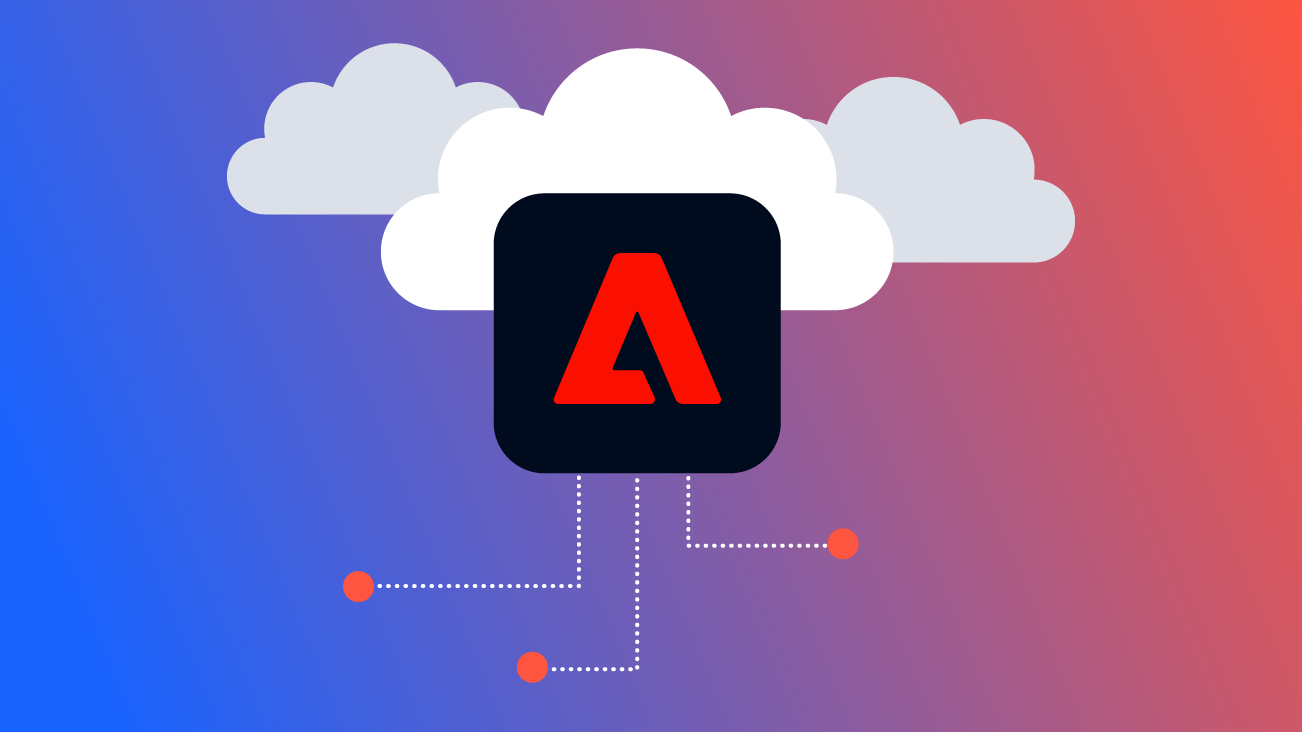Overview
Providing smooth, customized customer experiences has emerged as a crucial differentiator for companies in a variety of sectors. Consumers anticipate that brands will remember their preferences, react instantly to their actions, and provide consistent experiences at all points of contact.
It takes more than just conventional marketing techniques to meet these expectations. Real-time decision-making requires a cohesive, intelligent data infrastructure. Adobe Experience Platform (AEP) comes into play here. AEP helps businesses realize the full potential of their data by bringing order to disjointed customer data ecosystems. Adopting AEP, however, is a crucial strategic choice. Knowing what AEP offers, who it is best for, why it might be worthwhile to implement, and when it might not be the best option for your company are all covered in this guide.
Adobe Experience Platform (AEP): What is it?
Adobe Experience Platform is a real-time customer data platform (CDP) that provides individualized experiences across all digital and physical touchpoints, create dynamic profiles, and unify customer data. Fundamentally, AEP enables businesses to:
- Gather and standardize information from various systems.
- Create dynamic, automatically updating customer profiles in real time.
- Divide audiences into dynamic segments according to their characteristics and behaviors.
- Connected marketing, commerce, and service channels can be used to activate experiences.
- Keep up strict privacy and governance measures.
- Use machine learning and artificial intelligence to gain deeper insights about your customers.
- Consider AEP to be the customer data equivalent of an airport control tower.
In addition to ingesting data from various sources, it also standardizes and organizes it, tracks activity in real time, and permits coordinated responses based on customer interactions across various touchpoints.
Who gains the most from the Adobe Experience Platform?
Although AEP is a strong platform, it was created with particular kinds of organizations in mind. Businesses that gain the most from this include:
- Big companies with intricate client journeys
- Businesses that interact with customers through multiple channels, like financial services companies or retail brands.
- Businesses that handle millions of customer records
Where scale is crucial and conventional systems find it difficult to handle the volume of data, AEP excels. Businesses that use a variety of channels and locations . International brands that need assistance with compliance and local customization.
Adobe Analytics, Adobe Target, Adobe Campaign, and Adobe Journey Optimizer are natively integrated with AEP for companies that already use these Adobe Experience Cloud tools. Businesses with robust data, IT, and marketing teams
Collaboration between the data science, technology, and marketing teams is essential for the successful implementation of AEP.
Adobe Experience: Why Use It? The platform
Using AEP has a number of tactical benefits:
Activation of data in real time
Real-time customer profiles are supported by AEP, which enables brands to respond to consumer behavior instantly. For instance, a customer can almost immediately receive a personalized email or push notification when they abandon their shopping cart.
Unified customer profiles
AEP creates a single dynamic customer view by combining CRM records, website behavior, transaction history, service interactions, and more. This makes it possible to create highly customized experiences that surpass simple segmentation.
Deeper understanding via machine learning
AEP’s next-best-action suggestions, customer lifetime value scoring, churn analysis, and predictive modeling are all powered by Adobe Sensei, the company’s AI framework.
Designing for privacy and governance
AEP provides access controls, consent frameworks, and data lineage tracking to guarantee adherence to laws such as HIPAA, CCPA, and GDPR.
Smooth orchestration of the experience
Real-time orchestration of customer journeys across various channels is made possible by AEP’s integrations with Adobe Journey Optimizer.
A foundation prepared for the future
Because AEP’s architecture is modular, businesses can adjust to the emergence of new technologies in marketing, sales, and services.
Examples of successful businesses utilizing AEP in the real world
Numerous international brands have already changed their approaches to customer engagement by utilizing Adobe Experience Platform.
T-Mobile
AEP is used by T-Mobile USA to centralize customer data across retail, online, and service channels. By tailoring interactions according to real-time behavioral signals, they have greatly increased customer satisfaction and retention.
Verizon
Verizon provided consistent, tailored experiences by integrating AEP with their marketing and customer support systems. Their teams use AEP to react quickly to customer needs across channels and activate campaigns.
The Home Depot
To improve its omnichannel experience strategy, Home Depot uses AEP. Millions of customers receive personalized recommendations, promotions, and service experiences from Home Depot thanks to the integration of online and in-store data.
ServiceNow
AEP is used by ServiceNow to target enterprise IT buyers with its digital marketing campaigns. ServiceNow has observed increased lead engagement and sales pipeline velocity as a result of improved segmentation and real-time data activation.
When Adobe Experience Platform might not be the best option
AEP is not appropriate for every organization, despite its strength. Businesses should carefully consider how well the platform fits their resources and needs. AEP might not be the best option if
You run a small or startup business.
The platform might be too costly and complicated for smaller businesses given their marketing requirements and data volume.
Your internal technical resources are limited.
AEP implementation can be difficult without solid data architecture, integration, and martech skills. Basic personalization is all that is required. A lighter platform like HubSpot or Klaviyo might be adequate if your strategy consists only of basic email automation or segmentation.
You have few or isolated data sources.
AEP’s capabilities might go unused if you lack the infrastructure necessary to connect and manage several data streams.
Your top goal is rapid deployment.
AEP can take months to fully operationalize and requires careful planning for implementation.
Examples of real-world situations where AEP should not be used
An example of a startup E-commerce startup
When an up-and-coming fashion e-commerce company first attempted to use AEP, it encountered difficulties because of a lack of funding, unfinished data pipelines, and a quickly evolving business strategy. They switched to using Segment CDP after six months of investment in order to get a faster, more efficient setup that satisfied their requirements.
Mid-market business: Local medical facility
After investigating AEP, a local healthcare provider chose to postpone adoption. AEP was an overly complicated choice because of their small customer base, restricted IT bandwidth, and inclination for more straightforward HIPAA-compliant CRM solutions. Instead, they went with Salesforce Health Cloud.
How AEM Analytics can support your AEP success
Installing technology is only one aspect of deploying Adobe Experience Platform. It is a strategic endeavor that encompasses analytics, customer journey design, marketing operations, and data governance.
We at AEM Analytics assist businesses in using AEP successfully by:
- Performing evaluations of digital maturity
- Creating governance and data ingestion architectures
- Linking customer experience journeys to business objectives
- Creating segmentation plans and real-time customer profiles
- Launching customized advertising campaigns on both Adobe and non-Adobe platforms
- Delivering instruction and continuing assistance with optimization
Our professionals combine a business-centric approach aimed at producing quantifiable results with practical AEP project experience.
We can help you from strategy to execution if you are thinking about implementing AEP or have already started planning.
Do you have inquiries? Are you prepared to speed up the transformation of your customer experience? Speak with our AEP specialists right now.
Conclusion
An important development in how businesses handle and utilize customer data is the Adobe Experience Platform. AEP provides an unparalleled basis for businesses dedicated to providing individualized, real-time experiences at scale.
However, having the appropriate organizational preparedness, strategic vision, and knowledgeable partners are essential for success.
It’s important to consider your specific business requirements when selecting a platform like AEP, not just the newest technological advancements.
At AEM Analytics, we assist you in realizing the full potential of your data, putting effective solutions into place, and making well-informed decisions.
Allow us to assist you in realizing your digital goals.

